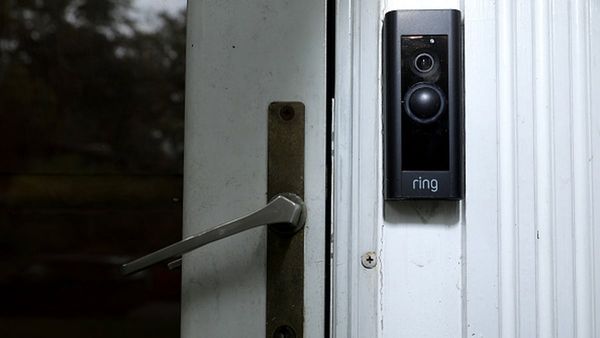
Which is Arthur Miller’s best play? Many would say Death of a Salesman. For me it is the multilayered The Crucible, which is currently enjoying a rash of revivals. Scottish Ballet are touring Helen Pickett’s popular version and, in London, Shakespeare’s Globe, breaking its usual Bardic custom, this week begins a nine-week run of Ola Ince’s new production. Welcome as this focus on Miller’s masterwork is, it also raises a number of questions.
You can see why The Crucible is so visible right now and why the Globe dubs it a “timely thriller”. Miller’s account of the witch-hunts in Salem in 1692 was initially seen as a political parable about Senator McCarthy’s investigation of suspected communists in the America of the early 1950s. Given the fact that in President Trump’s America, freedom of assembly, of the press and of speech are no longer guaranteed, and that you can be threatened with deportation for taking part in a pro-Palestinian protest, it is no surprise that people turn to The Crucible.
Its popularity is also part of a renewed fascination with the climate of fear in the McCarthy era. David Edgar’s Here in America explored the tension between Miller and his director, Elia Kazan, who named names to McCarthy’s committee, while Ryan Calais Cameron’s Retrograde, in contrast, shows a young Sidney Poitier steadfastly refusing to bow to political pressure.
While acknowledging that the rise of McCarthyism was one of his motives for writing The Crucible, Miller said there was something more: “It was as though the whole country had been born anew, without a memory even of certain elemental decencies which no one would have imagined could be altered, let alone forgotten.” In other words, there is more to The Crucible than a single political parallel and, whenever I see the play, I am struck by its capacity to take on new meanings and to reflect the pressure of the times.
I would cite three revivals in proof. I was lucky enough to catch Richard Eyre’s 2002 Broadway production with Liam Neeson as John Proctor and Laura Linney as his wife Elizabeth: her performance sticks in the memory for its perfect mix of puritanical reproach and palpable love. But what was extraordinary, at a time when the word “terrorist” was used with promiscuous abandon after 9/11, was Miller’s awareness of society’s tendency to demonise what it fears or fails to understand.
In 2006 Dominic Cooke did a brilliant production for the RSC which almost literally allowed us to see the play in a new light. Hildegard Bechtler’s set gave us glimpses of the Rousseau-like forest beyond the clapboard houses and Jean Kalman’s lighting showed sunshine penetrating the plain interiors as if seeking permission to enter. And when deputy governor Danforth, who comes to investigate the accusations of witchcraft, declared “A person is either with this court or he is against it”, he uncannily anticipated a phrase used by President George W Bush, designed to suppress internal criticism of the Iraq war: “Either you are with us or you are with the terrorists.”
Miller’s play took on yet another dimension with Yaël Farber’s astonishing revival at the Old Vic in 2014. This coincided with a spate of stories in the media about the sexual exploitation of minors by TV entertainers and Catholic clerics – and reminded us that at the play’s heart lies a story of an older man’s abuse of his power over a young girl. Proctor has had sex with the 17-year-old Abigail Williams, and it is his later rejection of her that drives her to testify against her former employer and his wife. But, far from portraying Abigail as a vindictive minx, both Farber’s production and Samantha Colley’s performance suggested she was more victim than villain. In seeking retribution for a genuine wrong, she exposed Proctor’s residual guilt and helped to destroy an already divided Salem.
My admiration for Miller’s play and my belief in its capacity to take on new meanings are, I hope, clear. But it is precisely because it is being revived at a time when President Trump is suppressing dissent and creating global chaos that I would raise another question: should we, as a form of intellectual protest, gradually wean ourselves off our dependence on American drama? I avoid the word “boycott” because I suspect it is both impractical and undesirable but I recall that I did once ask Harold Pinter, because of his disgust with US foreign policy, which he once equated with that of Nazi Germany, whether he had ever thought of withdrawing his plays from American performance. There was – naturally – a long pause, before Pinter replied that he hoped the production of his plays would give support to groups as opposed as himself to the destructive lies of American politicians.
It was a fair point. But even if a boycott of American plays, films and television is out of the question, I would suggest that we alter our angle of vision. I have read countless articles in the last month urging the UK to strengthen its political and economic ties with Europe, so why not add the arts to the list? It is of course true that the US and the UK are divided by a common language, but I have long argued for a greater awareness of the riches of European drama, which – aside from the work of the Citizens in Glasgow in its heyday, of the Almeida during the tenure of Jonathan Kent and Ian McDiarmid and of companies such as Cheek by Jowl and Complicité – has gone largely unheeded. Now surely is a good time to reassess our priorities. And while I’ve no doubt that the Globe’s forthcoming production of The Crucible will prompt thoughts of the vicious polarities of Trump’s America, the very fact of its doing so will remind us that there is a world elsewhere.
The Crucible is at Shakespeare’s Globe, London, from 8 May to 12 July
• This article was amended on 7 May 2025. An earlier version gave the surname of the character Abigail Williams as Warren.







